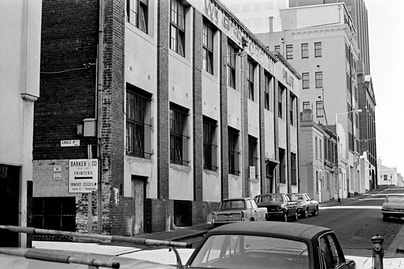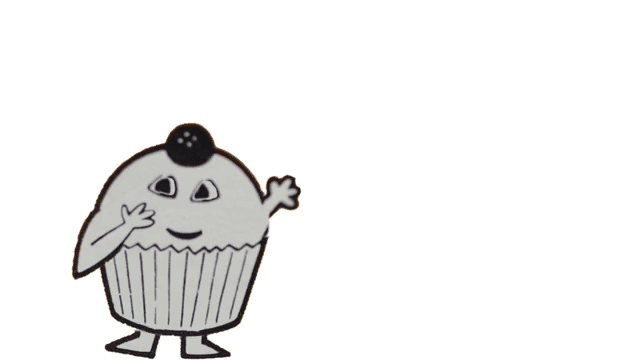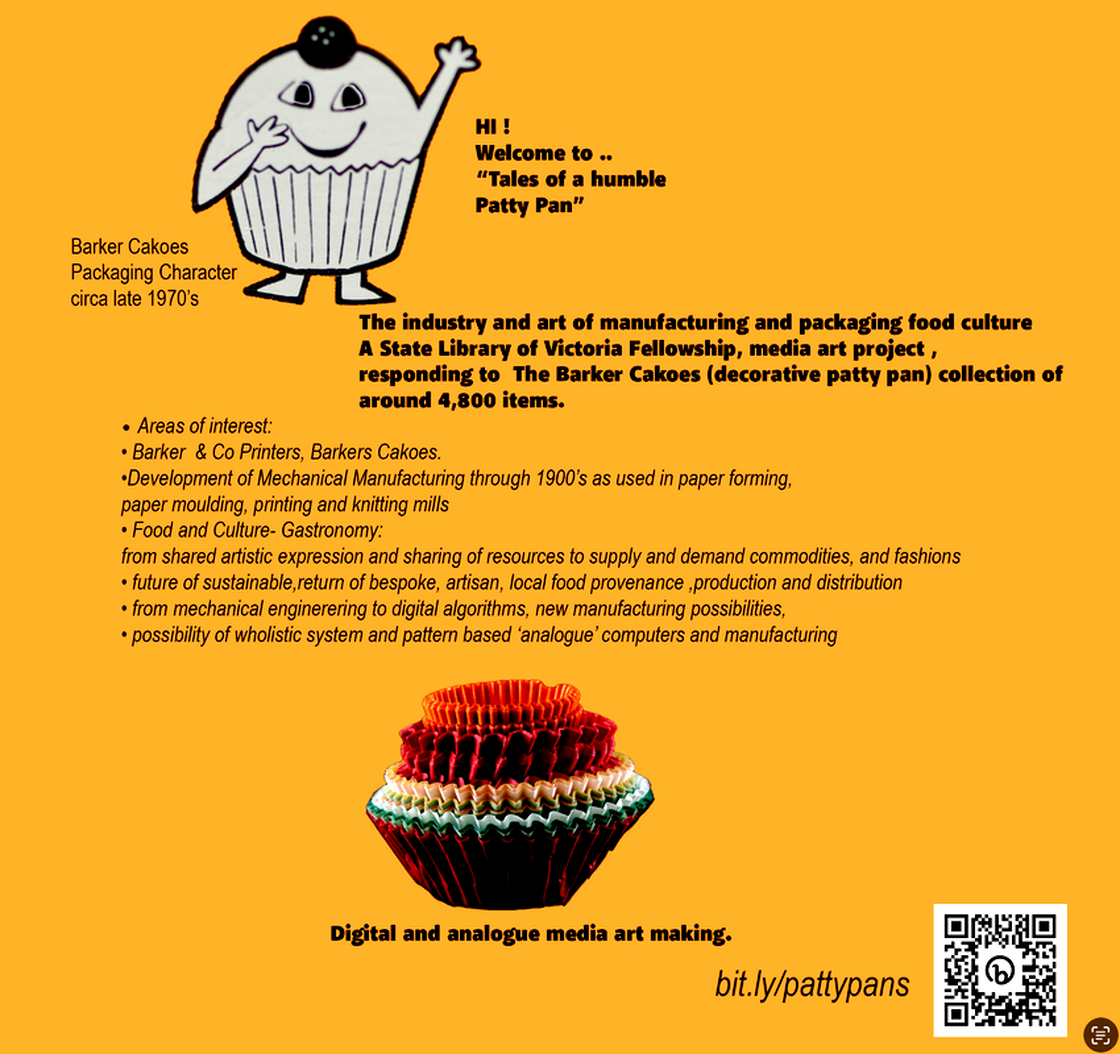I wish to respectfully acknowledge the Elders, past, present, and emerging, of the Boonwurrung,Wurundjeri , Dja Dja Warrung people of the Eastern and Western Kulin nations on whose country this project takes place.
Barker Cakoes, Patty Pans from the 1930’s to 1970’s
- the decorative packaging and manufacture of food fashion, and cultural values.
- the decorative packaging and manufacture of food fashion, and cultural values.
BARKER CAKOES COLLECTION_ screenshots of applicants own 1930's Recipe Book.

The inauspicious entrance to Barker and Co Printers in 1960,Little Lonsdale St/ Eagle Alley
Halla, K. J. (1960). Little Lonsdale Street North between Eagle Alley and William Street, Melbourne, [Vic.] [picture].
Halla, K. J. (1960). Little Lonsdale Street North between Eagle Alley and William Street, Melbourne, [Vic.] [picture].
|
|
In the 1930's, way post the Industrial Revolution, patty pans were produced by new, presumably electric, powered mechanics. They produced pre-printed patty pans in batches of 30 to 40 at a time depending on their size.(P.Sheen,1988) The current early twenty first century, automated mass production lines, let alone the emergence of machines that can apparently learn and predict complicated models and outcomes, must have been un-imaginable or only considered as vsome wild sci-fi dream. The final Managing Director of Barker & Co Printers in Melbourne, Peter Sheen, recalls that the Barkers & Co. 1930's -1950 's machines were, when working well, "reminiscent of the dextrous robotic hands of a nuclear laboratory: when misfunctioning — an engineering nightmare." causing peaceful "trained engineers" to "reach for a hammer"(P.Sheen,1988). For me, mass production is both a dream and nightmare. Sometimes it seems like an unnatural abhorrence, a million items that all look identical and too often end up in landfill. Yet at the same time every second object I use is mass-produced and I either enjoy or benefit from the abundance and accessibility that comes from the production lines at what untold expense to other individuals and the entire planet. I am not a "luddite" but It is interesting to ponder how mass production and the 'new' awareness of the value of small handcrafted, be spoke production may find a new and more dominant sustainable scaled up production mode in concert with what may for now seem like sci-fi dreams of production aided by "machine learning" coupled with "nature learning".. so called "artificial intelligence" that actually works with the inherent intelligence in all living things and relations. Biologists for example are already applying machine learning to attempt to understand and even communicate with animal languages. Plants and animals are known by many traditional wisdoms and modern science, to communicate , announce or predict the arrival of all sorts of vital information from changes in season, the arrival of new food sources or even advanced warning of natural disasters such as storms and earthquakes. Ourselves and all our machines and inventions are part of, and only exist in relation to, nature. We may just need to quickly find and implement more ways to repay nature her nurture if were are to continue to be able to sustainably share in the abundance and diversity that is already modelled in nature.
References: "The Golden Age of Patty Pans" Peter Sheen -La Trobe Journal No.42 Spring 1988. "Ways of Being Beyond Human Intelligence" James Bridle 2022. |




